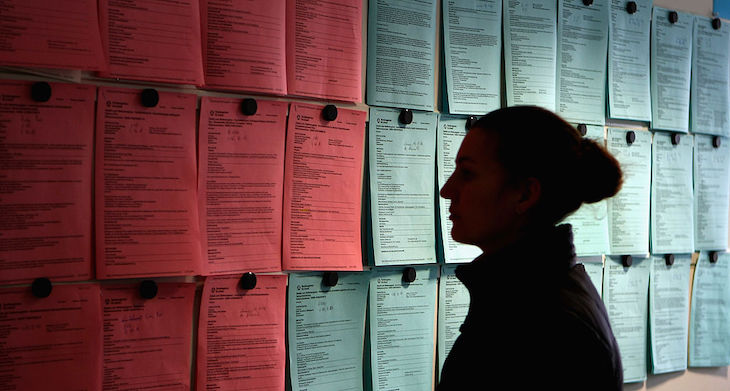The UK’s unemployment rate rose to 4.2 per cent in the three months leading up to August this year, according to new experimental data from the Office for National Statistics (ONS). This is a 0.2 per cent increase compared with the previous quarter (March to May 2023), but not a big change compared to previous data sets. The new numbers tell a familiar story: that the labour market is cooling slightly yet employers remain desperate for workers.
For the last five decades, the ONS has relied on its Labour Force Survey – which covers ‘tens of thousands of households across the UK’ – for its employment data. But in a blog explaining changes to their metrics this morning, the ONS’s director of economic statistics Darren Morgan explains that it’s been ‘harder to engage with enough people in certain groups’ especially since the pandemic.
The ONS is now using HMRC’s PAYE data to track employment rates, and claimant count data to monitor unemployment rates – both of which it says proved accurate during the pandemic. The ONS gave itself an extra week to release the experimental data, which is why this is the second labour market update this month (the first covered here by Michael Simmons).
Will these numbers nudge the Bank of England closer to another interest rate hike?
Looking at monthly comparisons, August’s unemployment rate is slightly lower than July’s: 4.2 per cent compared to 4.3 per cent. But these comparisons must now be taken with a pinch of salt, as the data sets are no longer measuring like-for-like. Still, it’s clear that the labour market remains resilient to the higher interest rate environment. As reported last week, job vacancies are close to the one million mark, falling by 43,000 between July and September 2023, down to 988,000.
The big question this morning is whether today’s new data might nudge the Bank of England closer or further from another interest rate hike at the start of next month. It’s unlikely the addition of this morning’s unemployment rate will make much difference. Last week’s wage data showed an average 1 per cent increase in pay in real terms. It’s hardly a hike that justifies the term ‘wage price spiral’, especially after almost two years of real wages falling behind inflation. Yet the Bank is still worried. As a result, the numbers that will really matter when it comes to determining the Bank’s decision will be wages and expectations for next month’s inflation data. Thankfully, for those hoping the Bank will keep interest rates steady, the rate of inflation is set to fall sharply due to changes in the Energy Price Cap which will bring down bills for consumers.
As a result, there is growing speculation that rates will be held for a second time at 5.25 per cent – but any decision is likely to be close. The Monetary Policy Committee voted 5-4 last time to hold rates, with all four votes cast against opting for another 0.25 percentage point rate hike. The Bank’s governor Andrew Bailey has warned that votes will be ‘tight’ for the foreseeable future. Still, market expectations for where rates will peak have fallen in recent weeks, now hovering just above where the Bank Rate sits now.
Either way, historically normal rates are here to stay for the foreseeable future.







Comments